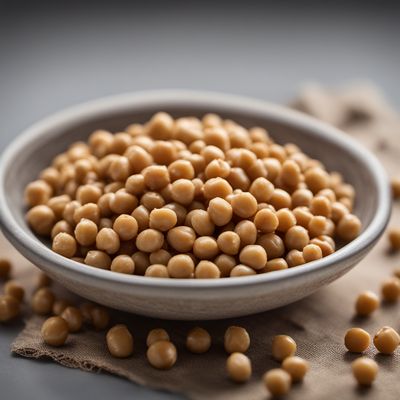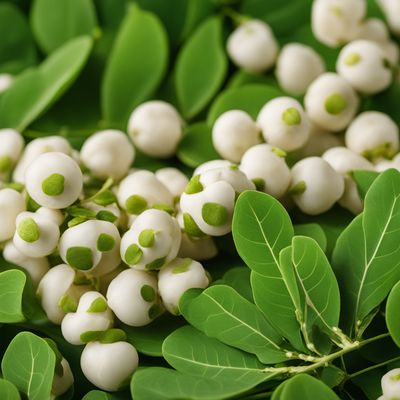
Ingredient
Chickling vetches (without pods)
The Nutrient-Packed Legume
Chickling vetches, also known as grass peas or khesari dal, are a versatile legume with a nutty flavor and firm texture. They are small, oval-shaped beans that come in various colors, including green, brown, and black. Chickling vetches are highly nutritious, packed with protein, fiber, and essential vitamins and minerals.
Origins and history
Chickling vetches have a long history of cultivation and consumption, dating back thousands of years. They are believed to have originated in the Mediterranean region and have been a staple food in many cultures, particularly in parts of Asia and Africa. Chickling vetches are known for their ability to thrive in harsh climates and poor soil conditions, making them an important crop in regions with limited agricultural resources.
Nutritional information
Chickling vetches are a good source of plant-based protein, dietary fiber, iron, and folate. They are also low in fat and cholesterol. However, it is important to note that chickling vetches contain a naturally occurring neurotoxin called ODAP, which can be harmful if consumed in large quantities. Proper cooking and moderation are key to safely enjoying this legume.
Allergens
ODAP (β-ODAP), a naturally occurring neurotoxin, is present in chickling vetches. It is important to soak and cook them thoroughly to reduce the toxin levels and ensure safe consumption. Individuals with G6PD deficiency should avoid consuming chickling vetches due to the risk of hemolytic anemia.
How to select
When selecting chickling vetches, look for beans that are plump, uniform in size, and free from cracks or insect damage. Avoid beans that appear shriveled or discolored. Opt for packaged chickling vetches from reputable brands or specialty stores to ensure quality and safety.
Storage recommendations
To maintain their freshness, store chickling vetches in an airtight container in a cool, dry place. They can also be stored in the refrigerator for extended shelf life. Use within a year for the best quality and flavor.
How to produce
Chickling vetches can be grown in home gardens or small-scale farms. They require well-drained soil and full sun exposure. Sow the seeds directly in the ground or in containers, following the recommended planting depth and spacing. Regular watering and occasional fertilization will promote healthy growth.
Preparation tips
Chickling vetches can be cooked and used in a variety of dishes, including soups, stews, curries, and salads. They can be boiled, pressure-cooked, or slow-cooked until tender. Chickling vetches can also be ground into flour and used to make bread, pancakes, or savory snacks. Experiment with different spices and seasonings to enhance their nutty flavor.
Substitutions
Lentils, split peas, or black-eyed peas can be used as substitutes for chickling vetches. Each legume will bring its own unique taste and texture to the dish, but they can be used interchangeably in most recipes.
Culinary uses
Chickling vetches are commonly used in traditional dishes from various cuisines. They are a key ingredient in Indian dal, Ethiopian wats, and Mediterranean stews. They can also be sprouted and used in salads or added to grain-based dishes for added texture and nutrition.
Availability
Chickling vetches are cultivated and consumed in many countries, including India, Ethiopia, Pakistan, and parts of the Mediterranean region. They are also available in specialty stores or online retailers that cater to international ingredients.


